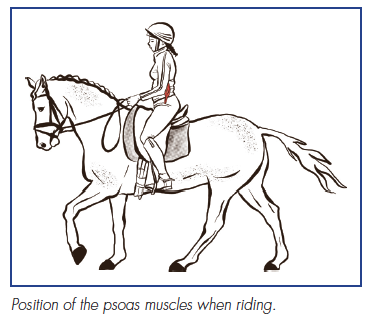Back Pain
Having said that, most back pain is not related to anything serious, and by keeping moving, avoiding aggravating tasks, and doing gentle exercise and stretches it should be possible to control it.
A recent article published in the Lancet examined the research into lower back pain assessment and treatment.4 The conclusion was that there was very little evidence for most of the invasive investigations, X-rays, scans, injections, and surgeries. The authors did find that some manual therapy was helpful, together with a graded exercise program.
However, there are some “red flag” symptoms that may indicate a more serious problem. If you are experiencing any of these, it is very important to seek medical attention so that you can be checked and treated if necessary, especially if they come on following trauma such as a fall from your horse. The symptoms to look out for are:
- numbness or pins and needles between your legs, in the area that would be in contact with the saddle
- inability to pass urine
- urinary or bowel incontinence
- leg weakness
- extreme pain in both or one of your legs.
How your riding is affected
Horse riders are particularly vulnerable to back pain, which is commonly exacerbated by the jobs involved in looking after horses, and chapter 8 has a lot of advice on how to do jobs on the yard while taking care of your back. Studies have shown that the type of saddle used, stirrup length, and riding position all affect the incidence of lower back pain in riders.
Horse riding itself can contribute to back pain too, and this is thought to be because of the compressive forces that are transmitted up through the rider’s vertebral column. It can also cause your spine to move too far into flexion or extension, especially in sitting trot.

As discussed in chapter 3, your psoas muscles are very important in stabilizing your lower back. As they attach directly into your spine, when they tighten up they cause pain and tension in your back. Even if the original cause of your pain is elsewhere, the psoas will tend to join in, making your symptoms worse. So it is always worth keeping the psoas released as well as treating whatever else is going on.
To be able to follow the rhythm of your horse’s body when you are riding, your psoas muscles need to be able to alternately lengthen and shorten. So, if they are in a constantly shortened state, it will have the effect of jarring your horse’s back too.
Intervertebral discs are the soft, gel-filled cushions that sit between each vertebra in your spine. They act as shock absorbers, while allowing safe movement of your spine. Spinal scans often…